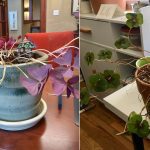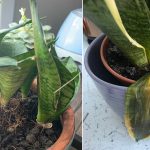Watching a Tradescantia zebrina fading its pretty purple and pink colorations is disheartening! Here’s how you can deal with it!
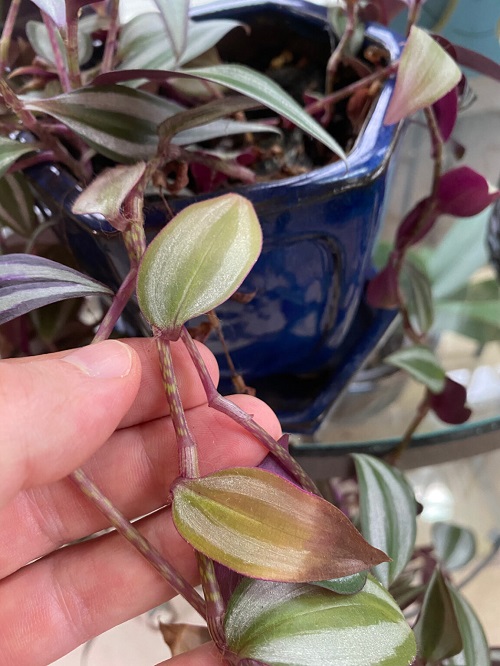
So, you got a Wandering Jew, and you love how it trails up the walls of your living room with its colorful foliage. But one fine day, you catch your Tradescantia Zebrina fading its beauty and looking dull. You are flabbergasted because you have provided the optimum conditions for it to grow. Or have you? Let’s learn!
Why Is My Tradescantia Zebrina Fading?
1. Insufficient or Too Much Light

This beauty is native to the warm, semitropical regions of Central America, where it enjoys the shade of trees and shrubs near water sources. So, to keep it in the best of its health, you must mimic this condition.
These plants owe their colors to anthocyanins, pigments that reduce chlorophyll levels in certain leaf spots, making them less effective at absorbing light. This imbalance can increase chlorophyll production, causing the colors to fade and the leaves to turn dull or green. When the steps of photosynthesis are mismatched, the plant enters a harmful process called photorespiration, which can lead to leaf discoloration and loss.
While low light can cause the leaves to fade and the plant to become leggy, too much direct sunlight, especially from a south-facing window, can also be harmful. Excessive sun can bleach the leaves, causing brown, yellow, or white spots, signaling that your plant has been overexposed, much like a forgotten cookie left in the sun!
Solution:
- If the leaves develop crisp edges or appear way too papery, along with faded variegation, they are most likely subject to too much sunlight. Move them to the north or west-facing windows, where they’ll receive only a few hours of mild sunlight.
- In case your plant looks somewhat slouchy with faded colors, move it to a brighter spot with a few hours of morning or evening light. If the days are cloudy and sunny days seem to be a long-lost friend, then a grow light can definitely compensate.
2. Overwatering or Underwatering

The vibrancy of this plant can fade due to both overwatering and underwatering, each affecting the plant in different ways. Overwatering saturates the roots, inhibiting their ability to absorb necessary nutrients, which can dull the plant’s normally vivid colors. An overwatered plant is generally complemented with mushy leaves and wet soil, too, giving clear indications.
Conversely, underwatering can stress the plant, decreasing its ability to produce the pigments that give it its rich hues. In this state, the leaves may appear faded or even bleached with a droopy appearance.
Solution:
- Tradescantia zebrina is a hardy plant that tolerates humidity well, but proper drainage and aeration must be ensured. Besides using a pot with a drainage hole and a well-draining substrate, you could also place stones, clay balls, or LECA balls at the bottom of the pot. Another option is adding cocotakos to the substrate, which contains oxygen microcells that help the roots breathe.
- Most people make the common mistake of sticking to a watering routine that often contradicts the weather, resulting in inappropriate watering. It’s wiser to follow a deep watering routine every time the top layer feels dry to the touch. Saturate the medium until excess water drains out from the bottom after providing the essential moisture to the roots.
3. Nutrient Deficiency
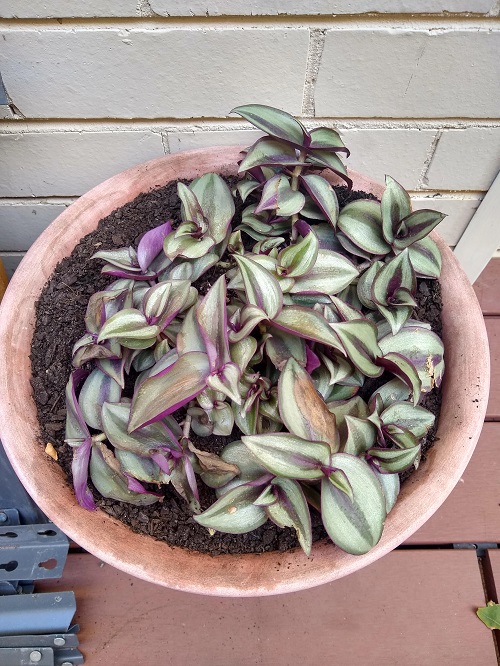
While nutrient deficiencies in your Tradescantia might not immediately show as obvious dullness or fading, you will notice the leaves losing their bright colors and turning yellow. This yellowing is a key indicator of a lack of essential nutrients like nitrogen, phosphorus, or potassium, which are important for maintaining the plant’s vibrant hues.
Solution:
- Choose a balanced, water-soluble fertilizer that has the right ratio of NPK (Nitrogen, Phosphorus, and Potassium), magnesium, and also micronutrients.
- During the growing season, which is between spring and summer, you must fertilize your plant every 4 to 6 weeks.
4. Temperature Stress

The temperature range in which your Tradescantia zebrina will be the happiest is between 60-75°F (15-24°C). It will tolerate slight variations in that temperature range, like nights when it drops to 10ºC; Tradescantia generally prefers warm climates. In fact, it can survive in temperatures that go up to 35-37ºC as long as it does not receive direct sun. However, you must look for some SOS signals in your plant, such as wilting, leaf discoloration or fading, and even a slow growth rate, which shows your plant is under temperature stress.
Solution:
- Do not sign up for the hassle of trying to grow Tradescantia outdoors and bringing it in during cold nights or putting it in sunlight for a few hours a day. Instead, just try to maintain the ideal temperature range indoors with the right lighting and watering conditions.
- Keep your plant away from drafts, air conditioners and heating vents.
5. Low Humidity
As mentioned before, Tradescantia zebrina loves warm, tropical climates with a good enough humidity level. This actively causes fading of leaves in your plant, causing a dull appearance if humidity levels are too low. On the other hand, if the substrate tends to remain too moist or becomes soggy, it can lead to stem rot and the appearance of mealybugs.
Solution:
- If you live in a drier climate, you should mist your plant once daily and ensure proper irrigation and lighting for robust plant health.
- Another solution to tackle low humidity levels is to place the plant in a tray filled with pebbles and water to provide it with the right moisture level.
- On the other hand, too much humidity can be tackled by ensuring that the substrate is not too soggy or wet.
6. Pests and Diseases
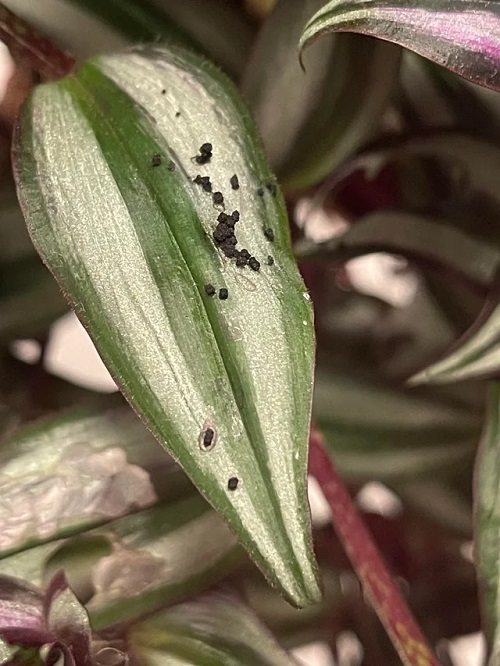
The last and the scariest cause of the leaves fading on your Tradescantia is a pest infestation. Pests like aphids or spider mites can really harm your plant, causing the leaves to lose their vivid, purple stripes. But that’s not all. Another reason this could happen is fungal diseases. Though these are not too common as the plant is quite resistant, excessive humidity levels because of poor aeration and bad drainage can cause these diseases. Pets like caterpillars, though not common, can harm your plant as well, even if they do not actively cause fading of leaves.
Solution:
- To prevent diseases or pest infestations, regularly inspect your plant’s leaves, stems, and soil thoroughly. This will allow you to catch pests promptly and nip the problem in the bud as soon as it occurs. To treat infestations, use insecticidal soap or neem oil. You could also try to go in with a little alcohol on cotton swabs.
- Ensure proper air circulation and appropriate humidity levels around the plant to prevent fungal diseases.
- If your plant has a serious infestation, you might have to use insecticide.





